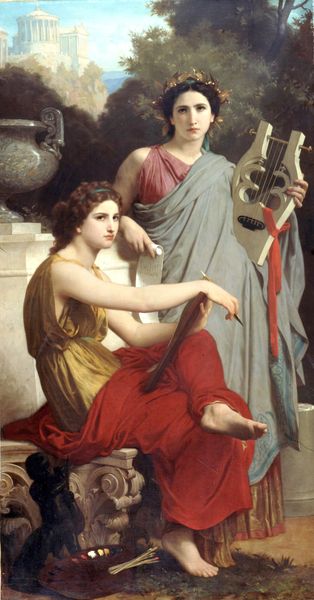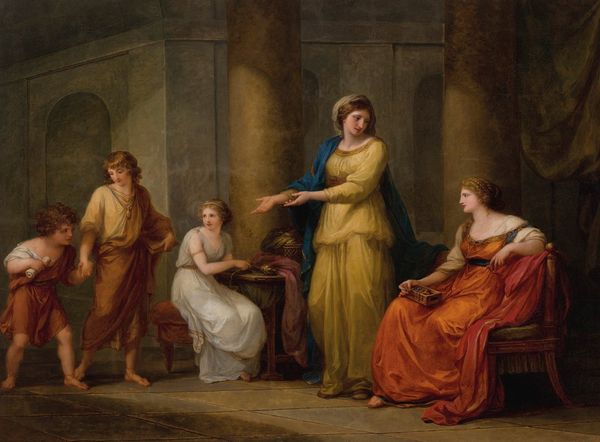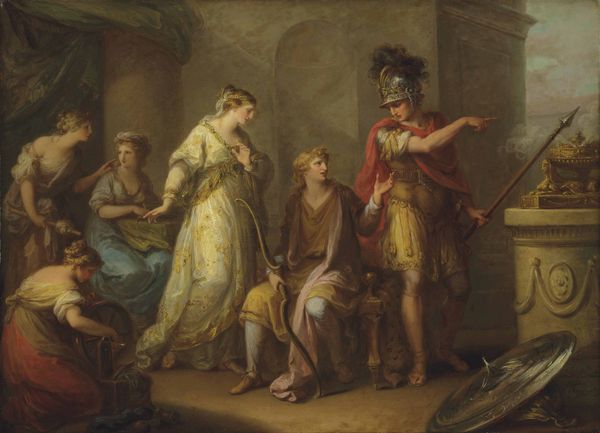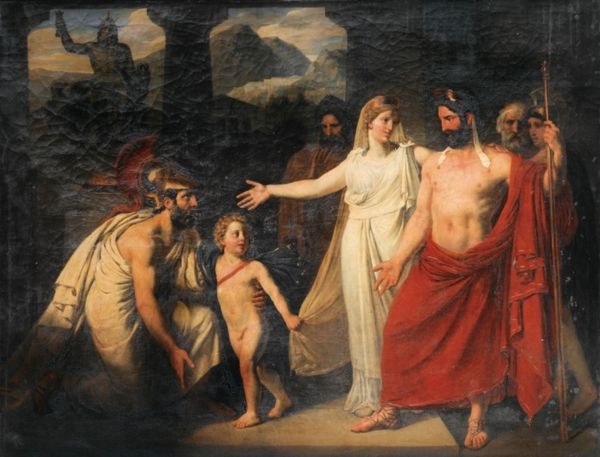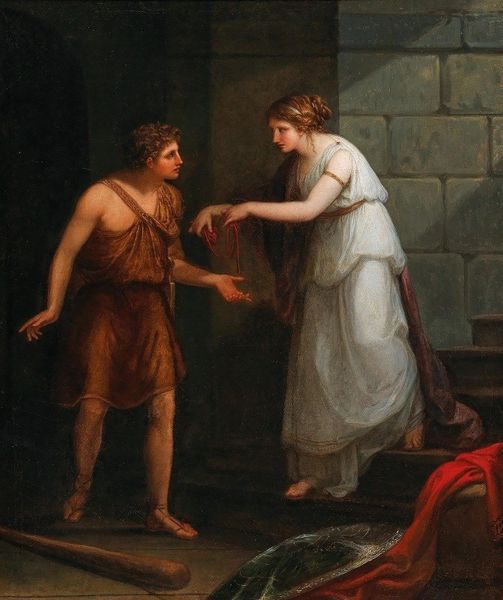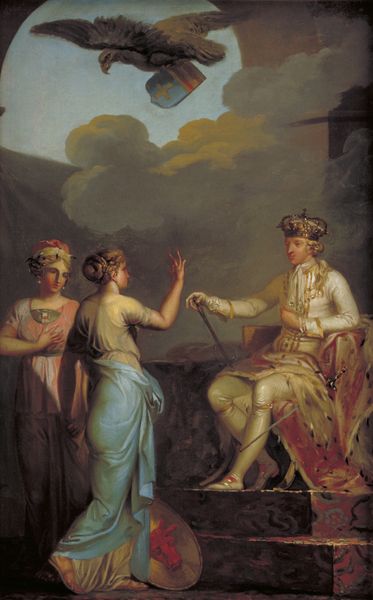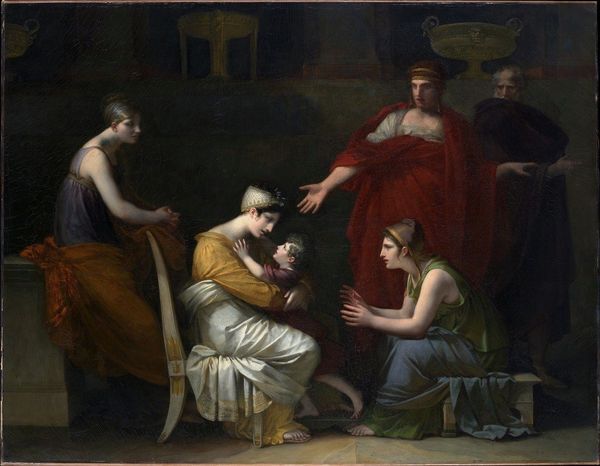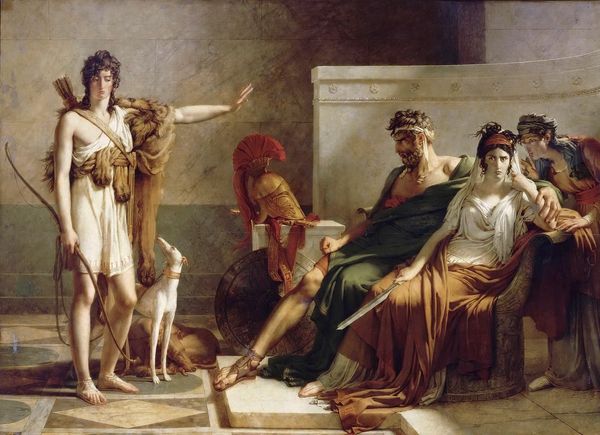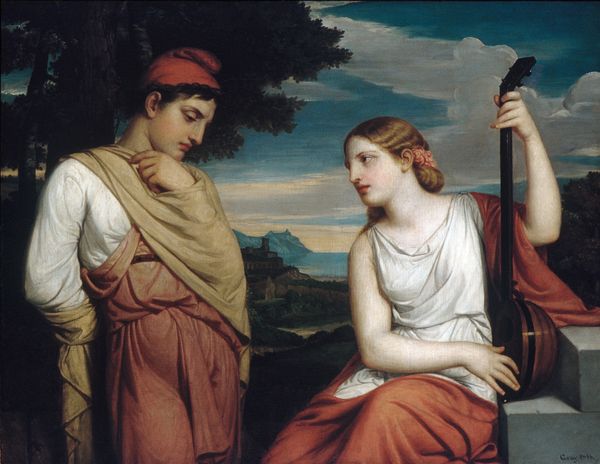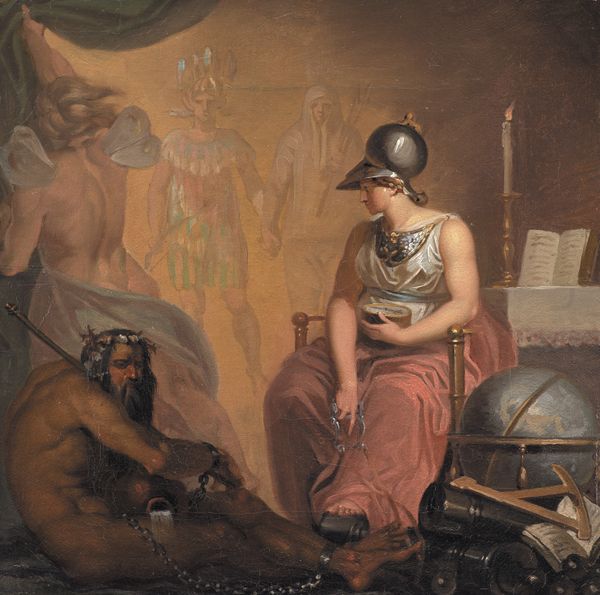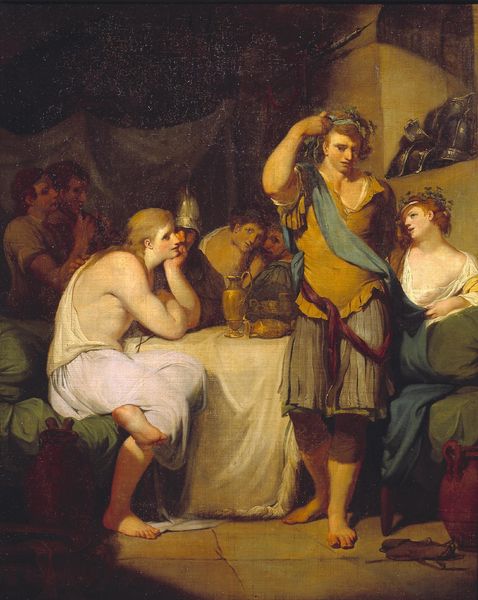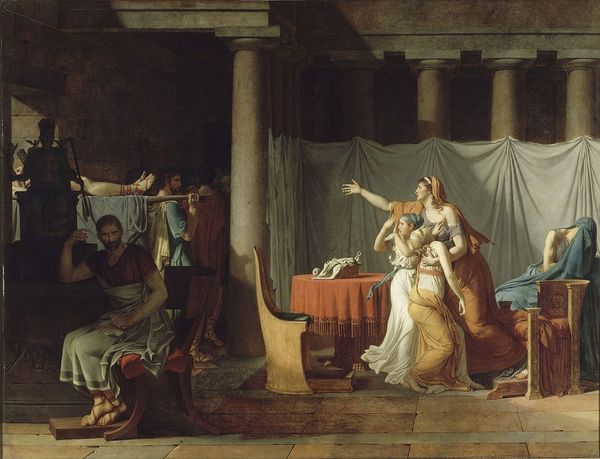
De actrices Joanna Cornelia Ziesenis-Wattier (1762-1827) en Geertruida Jacoba Grevelink-Hilverdink (1786-1827) in Iphigenia (1674) van Jean Racine (1639-99) 1800 - 1813
0:00
0:00
painting, oil-paint
#
portrait
#
gouache
#
neoclacissism
#
painting
#
oil-paint
#
classical-realism
#
figuration
#
genre-painting
#
history-painting
Dimensions: height 158.8 cm, width 120.7 cm, thickness 4.9 cm, depth 10.2 cm
Copyright: Rijks Museum: Open Domain
Curator: This striking painting, dating from around 1800-1813, currently residing at the Rijksmuseum, is attributed to Louis Moritz. It’s entitled "The actresses Joanna Cornelia Ziesenis-Wattier and Geertruida Jacoba Grevelink-Hilverdink in Iphigenia by Jean Racine." The medium appears to be oil paint. Editor: My immediate reaction is one of quiet dread. There's a profound sense of foreboding emanating from the canvas. The subdued palette, primarily browns, creams and muted blues, only amplifies this. Curator: Absolutely. And the staging of this, the public-facing aspect, matters greatly. Here we have this portrayal that freezes a specific theatrical moment, a representation layered upon a representation, showcasing not just the characters but the performers themselves. This allows us to reflect on the roles women played on the stage, both literally and figuratively, during this era, right? Their representation in the public eye was often fraught. Editor: Precisely. I see the tension written across the face of the woman in the foreground, the one being embraced, she seems resigned, and consider the expectations placed on actresses, their bodies and emotions subjected to public scrutiny and societal judgement, as women portraying women. This composition reinforces that tension by staging their emotions for display. Curator: It’s worth mentioning that Jean Racine’s play, Iphigenia, deals with themes of sacrifice and duty, so casting two prominent actresses in these roles creates an additional layer of commentary. To view this through a contemporary lens, what do these performances tell us about the performance of identity, particularly for women, then and now? What power structures are being reinforced or challenged? Editor: The neoclassical style, with its emphasis on order and reason, feels like a mask attempting to conceal the raw emotions swirling beneath. The gazes, those slightly averted eyes of both women are saying more than any grand gesture could. Even those background figures seem overwhelmed with sorrow. I appreciate this work allows to look beyond what seems immediately historical, instead becoming intimate and resonant. Curator: Yes, and this helps me to consider the political undertones that echo the tension between the actors personal identity, the identity of their characters, and our own personal identity. The layers really force us to think about social positionality.
Comments
No comments
Be the first to comment and join the conversation on the ultimate creative platform.
